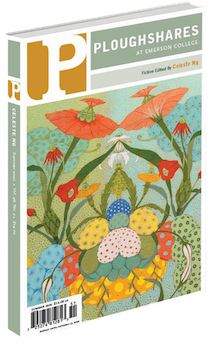Introduction
This is a letter from the past to the future.
All writing is, of course. In our moment in time, we put words on paper and hope that later someone will read them and recognize the people and the feelings we’re describing. No matter how many miles or years separate us from our readers, if we’ve done our job right, they’ll understand what we’re trying to say. A thread will stretch out and connect past and future—us to them, and back again.
But I’ve never been more conscious than right now, typing this, that these words will be read in a very different time. Right now, like most of the world, I am sheltering in my home during a global pandemic—a sentence most of us probably never expected to say. It has been just over four weeks since I saw anyone other than my immediate family, and it will probably be many more before it’s safe for most of us to live in public again. Already, it’s hard to remember what the world was like before: when we didn’t cross the street to avoid meeting another person, when gathering in groups could be a source of love and comfort instead of fear, when we did not need to scrub and scrub away all traces of human touch as dangerous contamination.
That’s where writing comes in.
The best stories—no matter when they are written or when they are set—always speak to both the writer’s time and the reader’s, whether those are separated by a month, a year, or centuries. Stories are more than documentation: they are a portal in time, through which the moment in which the story was written can magically be in conversation with the moment in which the story is read. Whether we learn, mourn, or simply remember as we look through that portal—well, that’s up to us.
As I write this note, I don’t know what the world will be like when you read this introduction. Perhaps it will have changed for the better, or maybe it will have changed for the worse, or—terrifyingly—we may have already returned to the state we were in before, the “normal” where many turned a blind eye to the systemic failures and injustices that caused this crisis in the first place. But I do know that stories are one of the ways we keep hold of the past, to learn from it, to remember what it was like and who was struggling to be seen—and they are also one of the ways we look to the future, imagining what could be possible, what the world might yet become.
The stories that follow will ask you: Do you still remember when the world was like this? Did you care? Is it still like this? Do you want it to be?
No matter when you are reading, and what is happening outside your door, I hope the pieces in this issue will speak even more powerfully now than they did when I read them in early 2020—a time that already seems far away, but that may seem a bit closer as you turn these pages.

